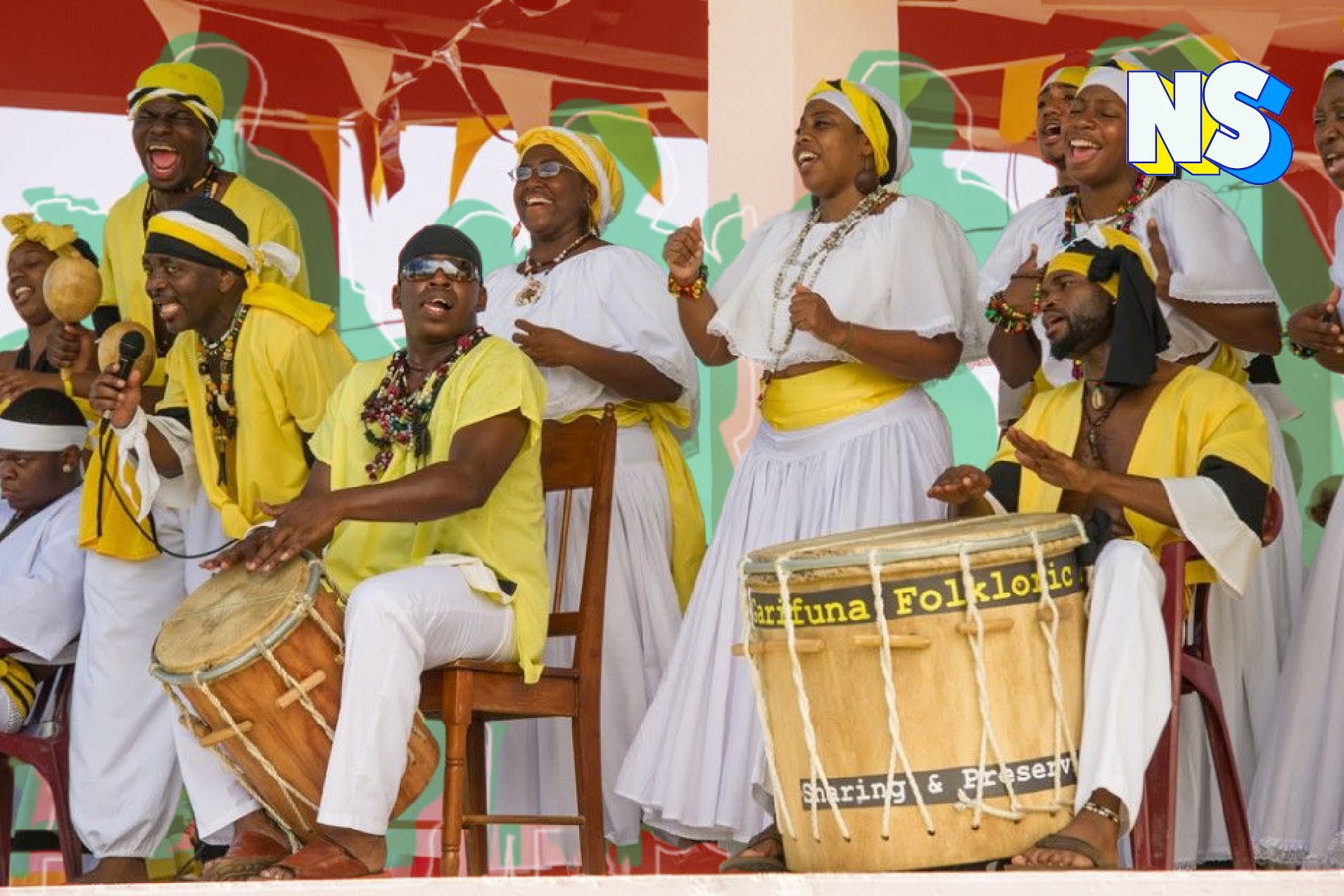Credit: Nuestro Stories
For quite some time, it seems that there has been some erasure when it comes to certain subsects of Latino culture.
The colonized mindset has allowed many to live in a world where colorism is a fact of life. If you fall under a particular spectrum of skin tone, you are talked about less and included in the conversations surrounding culture even less so. One of the most significant subsets of that is the Garifuna.
The Garifuna, also known as the Garinagu, are an Afro-Indigenous population originally from St. Vincent, the largest of a chain of islands of the Southern Caribbean nation. The Garifuna are direct descendants of the African survivors of the slave ships that wrecked off the island of St. Vincent in the late 1600s. They found refuge on St. Vincent, coexisting with the indigenous Kalinago of the area. From there, a new culture developed intermingling the Indigenous and African practices.
The culture they built around each other managed to insulate them from the surrounding colonization. Together, the two created a formidable fighting force against colonizers, one that withstood the onslaught of European invasion for a century.
It wasn’t until 1796, when the British and their advanced weaponry, forced the Garifuna into permanent exile as prisoners of war. Less than a year later, over 5,000 Garifuna were stolen from their land, taken on British ships, and abandoned on the deserted island of Roatan, near Honduras.
Read more: Latin Americans Know Coffee Best
Garifunas in Central America
Many of those who were left abandoned found their way to the main island of Honduras and aligned themselves with the Spanish, who were fighting against the same British that had forced them into exile. The Garifuna fought with the Spanish until they were defeated. They were then forced to move once more – this time dispersed between Nicaragua, Belize, and Guatemala. The Garifuna were a people who were constantly forced to move from one land to the next due to the rapid spread of colonization between British and Spanish forces.
Despite the multitude of attempts to destroy their culture, the Garifuna today still hold tight to many of the cultural traditions from hundreds of years ago.
Through the effects of colonization on the mindset of the masses, the Garifuna, and many other Afro-Latino offshoots often face additional discrimination. The impacts of colorism on Latino people often cause a great divide, within our own culture, and from others who share a similar struggle – whether in the United States or abroad.
The Garifuna of today is primarily located in Belize, though they are spread throughout much of Latin America and the Caribbean.
https://draft.nuestrostories.com//wp-content/uploads/2022/06/Liv-182x250.jpeg





